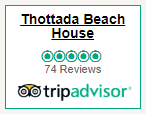For example, if you want to buy an $80 stock at $79 per share, then your limit order can be seen by the market and filled when sellers are willing to meet that price. A stop order will not be seen by the market and will only be triggered when the stop price has been met or exceeded. The natural counterargument to this is to say that Nvidia’s profits are going to soar due to the strong demand for AI chips. And true enough, Nvidia trades at only 25 times its estimated future profits, which makes it look like a potential deal. Like analyst price targets, earnings expectations can also become outdated, and that can make relying on them dangerous for investors. Even though the stock has traded at a high premium in the past, the levels it reached this year are well above the norm for Nvidia.
- If the price later reaches or surpasses your specified price, this will open your long position.
- These orders could be placed by people looking to enter long positions if the price breaks above the key level.
- A stop-limit order is a tool that traders use to mitigate trade risks by specifying the highest or lowest price of stocks they are willing to accept.
- Buying a stock price for more than it’s currently worth might sound counterintuitive, but it factors into many forward-looking investment strategies.
- For instance, trendline analysis may reveal an ongoing “up channel,” which you could then use as a basis to get long the market.
- No, the execution price is not guaranteed and may be different from the stop price due to market fluctuations.
You also need to keep in mind that you will not always be entered into the exact price you were quoted when you hit buy or sell. Investors need to think hard about their objective price target when placing a buy stop order. A buy stop order can help bulls and bears alike navigate future price uncertainties. Here’s a closer look at how a buy stop order works, when to use one and what to consider as you submit this type of order to your broker.
Buy Limit and Stop Order: What’s the Difference?
Let’s say a trader wants to invest in the stock of Company A. The stock trades at $10 per share but they believe that stock will drop down to their desired limit of $8. A few days later, the price drops below the $8 limit, which means the trader can purchase shares until the price reaches the limit. To trade this opinion, you can place a stop-buy order a few pips above the resistance level so that you can trade the potential upside breakout. If the price later reaches or surpasses your specified price, this will open your long position.
The fact that it can still generate strong growth even despite significant headwinds in the Chinese market is a strong sign of Nvidia’s growing versatility and diversification. Although business is booming for Nvidia, investors shouldn’t look past the risk that tensions with China present. Nvidia projects overall Q4 sales will top $20 billion — representing a year-over-year growth rate of 231%. What’s impressive is that Nvidia expects growth in other parts of the world to more than make up for the declines in China. BYD is close to snatching Tesla’s crown as the top seller of EVs worldwide, selling just 3,000 fewer EVs than Elon Musk’s company in the three months to September 30. In a Wednesday Shenzhen Stock Exchange filing, chairman and CEO Wang Chuanfu said the buybacks are intended to safeguard shareholders, boost investor confidence, and stabilize BYD’s valuation.
All content on this website, including dictionary, thesaurus, literature, geography, and other reference data is for informational purposes only. This information should not be considered complete, up to date, and is not intended to be used in place of a visit, consultation, or advice buy stop price of a legal, medical, or any other professional. Do your research before investing your funds in any financial asset or presented product or event. The Price action course is the in-depth advanced training on assessing, making and managing high probability price action trades.
Putting Buy Stops in Place
Stop orders should be placed at levels that allow for the price to rebound in a profitable direction while still providing protection from excessive loss. Conversely, limit or take-profit orders should not be placed so far from the current trading price that it represents an unrealistic move in the price of the currency pair. The buy stops above theory comes into play as the share price approaches resistance. As the price approaches that level, those concentrated sell limit orders will be executed. If the price can survive that wave of selling, it will continue upward above resistance.
A buy-stop-limit order is similar to the buy stop order except that, instead of becoming a market order once the stop price is reached, a limit price is set as the maximum amount the investor is willing to pay. A limit order gives a trader more control over market entry points than a market order. However, you risk getting a partial fill or no fill at all should the market fail to reach your limit price. Unfortunately, you also run the risk of getting filled at an unwanted level if the price surges drastically higher.
What Are Buy Stops Above?
In addition, identifying the potential downside in advance allows the investor to prepare for a worst-case scenario. The Treasury wants to maintain the current level of coverage of free access to cash, through ATMs or face-to-face services, but says that could be diluted as cash use falls. Share prices of Nvidia have more than tripled this year, hitting record highs. But with that optimism also comes extremely high expectations for the future. Investors are not only factoring in future growth, but they also expect perfection from the business.
What Are the Pros and Cons of Limit and Stop Orders?
If you go short, the limit-buy order should be used to place your profit objective. Note that these orders will only accept prices in the profitable zone. Limit orders are commonly used to enter a market when you fade breakouts. You fade a breakout when you don’t expect the currency price to break successfully past a resistance or a support level.
They bet the price will decline in the time period, and they can buy the same number of shares at a lower price before returning them to the lender. They would profit from the difference between the sale price and the cheaper repurchase price.On the other hand, if the share price starts rising, that can diminish or erase investors’ short-sale profit. They could be exposed to large losses if the market price climbs above the short-sale price.
How to Use Advanced Stock Order Types
Investors should take the time to adapt these tools to their comfort level and risk tolerance. Bear in mind that, for a buy limit order, you’ve set the highest price at which you want to buy shares. Thus, your order fills only if the market trades at that price or better.
A stop order may be of benefit to an investor who is unable to monitor a stock position closely. A stop order may also take some of the emotion out of trading by allowing the investor to exit or enter a position automatically, once a stock reaches a certain price. In this scenario, consider placing the buy stop at 35.25 to provide enough room for a final round of buy orders without triggering the stop and incurring an unnecessary loss. In this scenario, consider placing the sell stop at 34.75 to provide enough room for a final round of sell orders without incurring an unnecessary loss.
If you have a long position on, say the USD/CHF, you will want the pair to rise in value. In order to avoid the possibility of chalking up uncontrolled losses, you can place a stop-sell order at a certain price so that your position will automatically be closed out when that price is reached. “This type of order gets one last chance to fulfill before it’s canceled without any execution. It helps protect against whipsaws and sudden spikes — especially on highly volatile stocks.” Investors use buy stop orders to protect themselves from increasing losses in a short sale or to enter the market at a specific breakout point, expecting the upward trend to continue.
If the price moves above the resistance line, the sell limit orders will likely be exhausted and now mostly buy stop orders will remain. In the case of a sell stop order, a trader would specify a stop price to sell. If the stock’s market price moves to the stop price then a market order to sell is triggered. Different than limit orders, stop orders can include some slippage since there will typically be a marginal discrepancy between the stop price and the following market price execution. The strategies described above use the buy stop to protect against bullish movement in a security. Another, lesser-known, strategy uses the buy stop to profit from anticipated upward movement in share price.




